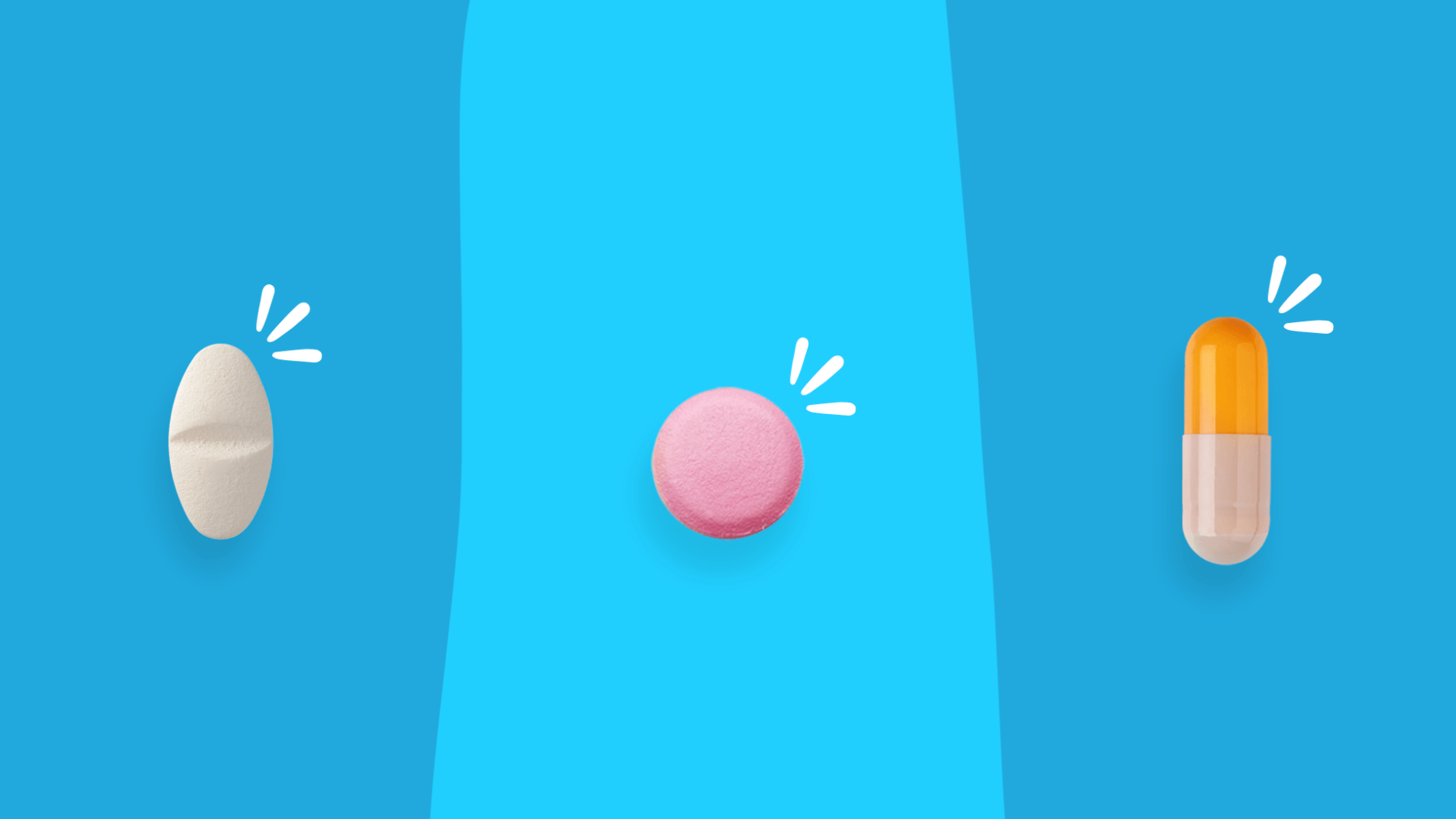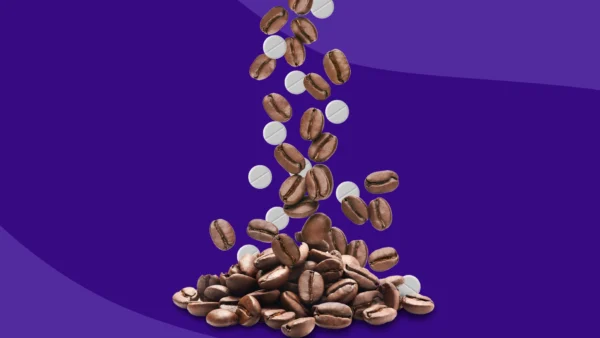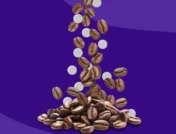Oral medications come in many different forms from tablets to liquids—and even powders. Each one has benefits and drawbacks in terms of how well they work, how easy they are to use, and safety. But, overall they have the same goals: to treat or prevent illness.
Drug form and duration
So why do medications come in different forms? “The main purpose of putting a medication in a specific form is getting the drug to the site where it needs to be,” says Gina J. Ryan, Pharm.D., the chair of Pharmacy Practice and a clinical professor of Pharmacy Practice at Mercer University.
Ryan explains that some medications may not be effective in certain parts of the body. For example, stomach enzymes that help to break down protein in food also destroy some drugs. “That’s why you may have to give an injection,” Dr. Ryan says. “Or, there are some drugs that you give on the skin.” Certain medications are only available in non-oral form, such as insulin. While others, such as cancer medications, are available in all forms, including injections, liquids, pills, and topical treatments.
A medication’s form can also affect its duration, or how long it takes the body to break it down. Patches and extended-release tablets slowly release drugs into the body, increasing the product’s duration.
What are the different forms of oral medication?
Injections and patches are both forms of medication that bypass the digestive tract. Oral medications are taken by mouth. They typically don’t start working until they reach the stomach or bowel and enter the bloodstream.
Tablets
Tablets are medications mixed with a binder powder, then molded and pressed into a tablet form. Most tablets have a thin coating for easy swallowing, to help the drug dissolve in the stomach, or protect the stomach. Enteric-coated tablets absorb in the small intestine. There are different types of tablets:
- Chewable tablets dissolve and are absorbed rapidly in the stomach, offering a quick onset of action. They may come in different flavors.
- Orally disintegrating tablets dissolve on the tongue. They go directly into the bloodstream and work the fastest, such as with certain anti-nausea and migraine medications.
- Sublingual tablets go under the tongue. They’re also quick-acting; one example is nitroglycerin tablets.
- Effervescent tablets are dissolved in liquid and then drunk.
Capsules
Capsules are a solid dosage form. The medication is enclosed in a hard or soft shell, usually made of gelatin, that breaks down in the digestive tract.
Spansules
Spansules are capsules that release medication at a steady rate over a period of many hours. For example, the attention deficit hyperactivity disorder medication Dexedrine is a spansule that contains dextroamphetamine. The initial dose is released promptly, and the remaining medication gradually enters the body.
Softgels
Softgels, also known as liquid gels, are similar to capsules, except the medication is suspended in gelatin or a similar substance.
Liquids
Liquid medications are for those who have trouble swallowing a tablet or capsule, or are too young to do so, like infants and children. They must be measured precisely (with a proper measuring device as opposed to a kitchen teaspoon). They’re less portable than solid dosage forms.
Granules or powders
Granules are mixed into water or a small amount of soft food like yogurt, while powders often come pre-measured in packets and are designed to be dissolved into water. People who have trouble swallowing pills may prefer granules or powders.
Tablet vs. capsule: Which is better?
Experts say there are no true pros or cons of each of these pill forms, only what works best for the person taking them. If you’re standing in the pharmacy aisle torn between Advil tablets and Advil liquid-gel capsules, here are some things to keep in mind about each:
Shelf-life: As solid dosage forms, tablets and capsules tend to have a longer shelf-life. Check the package for the exact expiration date.
Ease of swallowing: Some people prefer tablets, and others prefer capsules, but again, this depends on the drug. There are some tiny tablets that are easy to swallow, and then there are “horse pills.” Often, over-the-counter drugs show a picture on the box of the pill in its actual size and appearance, which will give you an idea of how easy the medicine will be to swallow.
Price: The price involves factors like if the medicine is brand or generic and how many pills are in the bottle.
Dividing the dose: If you need to split the dose, you will need to go with a tablet because capsules can’t be split. However, some tablets are extended-release and cannot be divided. Check the manufacturer instructions for more information or ask your pharmacist.
Your pharmacist can help you with any questions you have about various formulations.
What are the different medication durations?
Many medications come in two different forms—immediate-release (IR) and extended-release (ER).
Immediate-release
As the name suggests, immediate-release medications work quickly to relieve symptoms. The downside is relief may only last a few hours before the medication starts to taper off. This type of medication may require multiple doses throughout the day.
Extended-release
Extended-release medications offer a slower delivery and have a sustained effect for a longer period of time, usually 24 hours with one dose. When available, once-a-day dosing may be more convenient, especially for complex drug therapies. “There’s less chance of missing a dose compared to taking a medication two to four times a day,” says Sophia De Monte, RPh, media advisor to the American Pharmacists Association.
Choosing extended-release or immediate-release depends on you and your healthcare provider’s goals. “If you have a headache, you want immediate relief. But if you’ve had a major procedure and know that you’re going to be in pain for a long time, you may take an extended release preparation to manage your pain for the duration of your recovery,” Dr. Ryan says.
A person’s age and their liver and kidney health, which affect how the body breaks down and gets rid of medications, help to determine whether extended-release vs. immediate-release medications may work better.
Are certain medication forms better?
The best form is the one that’s most effective for the person taking it. Adult medications have more variety, while most pediatric medications are either in a liquid or chewable form.
Pill safety
Many people split their tablets to save money or adjust the dose of their medication. Some healthcare professionals even recommend this practice. Talk to your healthcare provider before splitting a tablet and consider these recommendations from the Food & Drug Administration (FDA):
- Read the “HOW SUPPLIED” section of the medication insert to find out if the FDA approves it for tablet splitting—or ask your pharmacist. Most sustained, controlled, or time-release medications will not be recommended for splitting.
- If it’s approved, look for a mark on the tablet that shows where to split it. Ask your healthcare provider or pharmacist about the best way to split a tablet.
- Take both halves of a tablet before splitting the next one, and don’t split the entire supply at once. Heat, humidity, and moisture can affect split tablets.
- If you switch to a different medication brand, confirm whether it’s okay to split the new tablet. Companies may manufacture their medications differently.
Pill-swallowing tips
One in three people have trouble swallowing pills and end up gagging, vomiting, or choking. This may cause them to stop taking their medication, which can worsen their condition.
In a study published in the Annals of Family Medicine, researchers tested different swallowing methods with pills of different shapes and sizes. They found two techniques that help people get pills down easier.
1. For tablets: pop-bottle method
Fill a plastic water or soda bottle with water and place the tablet on the tongue. Close your lips tightly around the opening of the bottle, and with a quick sucking motion, swallow the water and tablet without letting air into the bottle. The action should cause the bottle to squeeze in on itself. This technique helps to avoid the conscious act of swallowing.
2. For capsules: lean forward method
Put the capsule on your tongue, and take a medium sip of water, but don’t swallow yet. Bend your head forward by tilting your head toward your chest. Swallow the capsule and water with your head bent forward.
Some people crush pills or open capsules and mix them into a soft food like applesauce or pudding for easier swallowing. Experts don’t recommend this for all medications, especially extended-release drugs. Crushing them can release the medication too quickly and cause side effects. Talk to your healthcare provider or pharmacist first.











